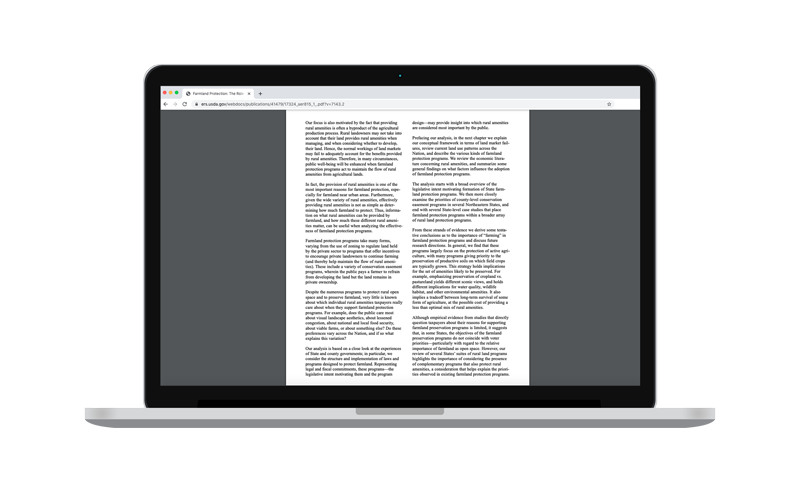Are PDFs unfit for human consumption?
Research spanning 20 years proves PDFs are problematic for online reading. Organizations continue publishing important work in user-hostile PDF format, but Report Kitchen can help.
Jakob Nielsen has been a respected name in usability and user experience research for over 25 years, and his evidence-based recommendations have been adopted by everyone from small designers to the largest digital studios, and implemented in online experiences across every public and private sector field.
In a recent article titled “PDF: Still Unfit for Human Consumption, 20 Years Later,” Nielson and UX designer Anna Kaley reconfirm what their research has shown since 1996: PDFs are unpleasant to read and navigate, and remain unfit for digital-content display. Interestingly, while some of the problems mentioned in their 2001 and 2003 studies, such as memory errors and browser crashes, are no longer a serious issue, there is "just as much if not more user hostility toward PDF." You can feel the disappointment in some of the comments pulled from their user testing research, such as
“I expect it to talk more about what they can do for me. If the print was bigger, that would be really helpful. Now, I’m stuck in a PDF.”
"It looks like I'm going to have to go to PDF, which I'm dreading."
Nielsen and Kaley conclude "Our new studies keep finding the same problems with PDFs in online interfaces. It’s time to put an end to problematic PDFs, once and for all."

Why are PDFs still with us?
With two decades of research and piles of user stories expressing disappointment and frustration with having to read PDFs online, why do so many organizations still publish reports, policy recommendations, research results, and similar long documents as PDFs?
- Sometimes you need more than Tweets and TikToks. The most commonly-heard advice on writing for the web is "keep it short." Yes, we're all aware that people's attention spans are measured in nanoseconds now, but when you've invested significant time and resources in preparing a report or publication, you most likely can't condense it into seven bullet points. Going digital hasn't eliminated the need for long-form content.
- Sometimes a print (or print-style) version is necessary. If you need to distribute your document in hard copy, or have it available for readers to download and print on their own, you probably need to produce a PDF version anyway, so posting that same file on the web can seem like a good option.
- Sometimes a PDF seems like the only practical option. Creating an engaging web presence for a substantial body of content isn't easy, or cheap. When a web team (or a team of one) is handed a completed report document and asked to post it online, if they're not given sufficient resources, simply posting the PDF as-is may seem like the only option.
It doesn't have to be this way
Publishing long-form reports and documents in an engaging, web-native format doesn't have to be time-consuming or expensive. We've built a platform designed especially for creating a digital version of long-form report documents. Check out some of our work, and learn how our process works.
We can create a digital presence for your content that eliminates all the limitations and frustrations Jakob Nielsen has been writing about for 20 years — and goes far beyond what PDFs can do by incorporating interactivity, detailed analytics, improved social and SEO capabilities, and much more. Use the form below to get in touch. We'd love to show you how much more engaging your content can be!
